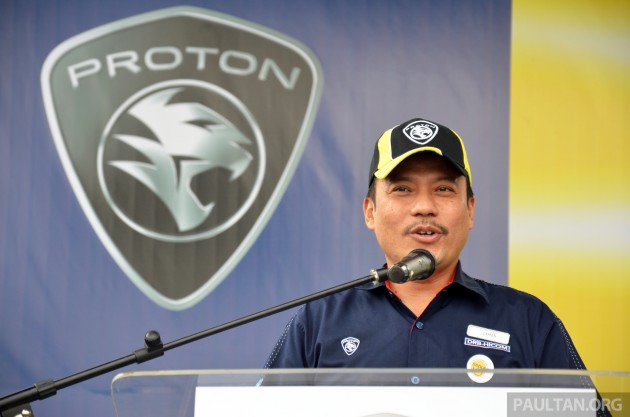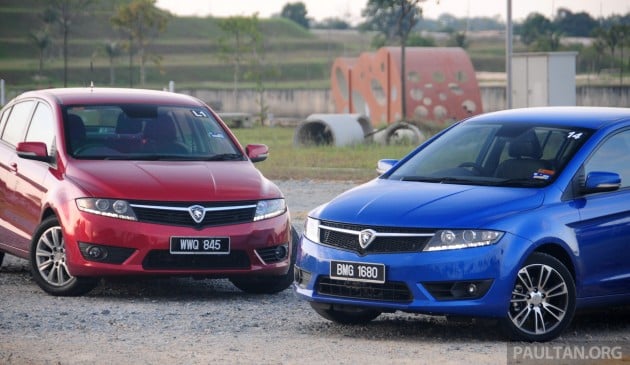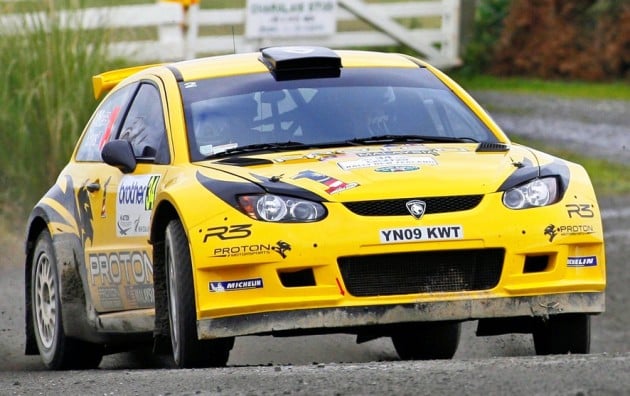At Proton’s recent Kuala Terengganu sales carnival, we had the chance to sit down with deputy CEO Datuk Lukman Ibrahim for a short chat, during which he talked to us about export plans and performance, the upcoming P2-30A Global Small Car and the general improvements that have been made at the national carmaker of late.
Regarding Proton’s plans to re-enter the UK, Lukman confirmed the Preve, Exora and Suprima S as the three new models that would spearhead the revival there. We reported previously that the brand’s relaunch was expected for December, and that British sales had not been encouraging due to the lack of new models.
“In terms of product development, our technical team are due to give me their readiness and availability report, while our commercial team are now working on price positioning and the level of advertising and promotion,” Lukman said. “We hope to resume operation (in the UK) within this year.”
The deputy CEO also indicated that the much-talked about six-speed manual gearbox (which has been announced for Australia from 2014) will be paired with the turbocharged 1.6 litre CFE engine rather than the non-turbo CPS and IAFM mills (for which five-speed manuals are already available).
This 6MT-CFE combo will be introduced in developed markets, including the UK. It’s definitely in the plans for Malaysia; what’s not so definite at present is who will get it first or when.
Where overseas sales are concerned, Proton is currently shifting over 1,000 cars a year in Indonesia. In Egypt, annual sales were previously around the 3,000 mark, but this has fallen in recent times to about 1,000, due to the unrest in the nation, Lukman said, adding that Brunei has registered a high growth rate for the company, although sales numbers there are small in comparison.
The much-anticipated Global Small Car (GSC) is expected to launch in Malaysia sometime around April. Lukman revealed that the vehicle has been designed with the intention for export, and will have features that meet international requirements (spyshots have revealed an ESC button on the vehicle’s dashboard).
Will it be an Energy Efficient Vehicle (EEV)? “We are trying to meet the requirements,” answered Lukman. “But even without the EEV (policy), it’s the trend for manufacturers to come up with more fuel-efficient vehicles, (and this is) the direction that Proton is taking as well.”
What kind of engine would the GSC have? “In terms of a solution, I think it’s very much optimised,” was Lukman’s cryptic reply, leading us to suppose that an “optimised” version of an existing powerplant could be used for the B-segment hatch.
The legendary Proton Satria Neo S2000 rally car, of which we’ve not heard news for some time, has apparently been put on the back burner, if not retired altogether. “We are reviewing that (rally) programme in the long term,” explained the deputy CEO.
“We need to study (it) further, maybe by this year we’ll have a clear picture of our position in the context of (Super 2000) or even races outside of Malaysia.”
Meanwhile, improvements have been made in product quality and after-sales, according to Lukman. The implementation of a “cross-functional team” – one in which data regarding customer complaints are shared between Edar and manufacturing – has been beneficial to customer service and problem-solving, he said.
“The trend of complaints have reduced and the closure of problems have been very much effective, with fewer outstanding, unattended and vehicle-off-the-road issues,” said Lukman. He added that the increased availability of data has also made it easier for management to make decisions.
AD: Drive the Proton model of your dreams. Submit your details and Proton PJ will get in touch with you.
Looking to sell your car? Sell it with Carro.

























AI-generated Summary ✨
Comments mostly focus on Proton's new six-speed manual pairing with the CFE engine, with some expressing excitement about the potential for better performance and driving experience, especially in the B-segment hatchback. There is optimism about Proton's global ambitions and product improvements, but also skepticism regarding quality, safety standards, and the company's ability to compete internationally, particularly in Europe and developed markets. Many comments criticize Proton's past failures, reliance on political protection, and the outdated Campro engine, urging the company to innovate with better engines, transmissions, and design. There is also discussion about Proton's strategic focus on export markets and the need for more engineering-driven leadership. Overall, sentiments are mixed, with hope for improvement but concern over past shortcomings.